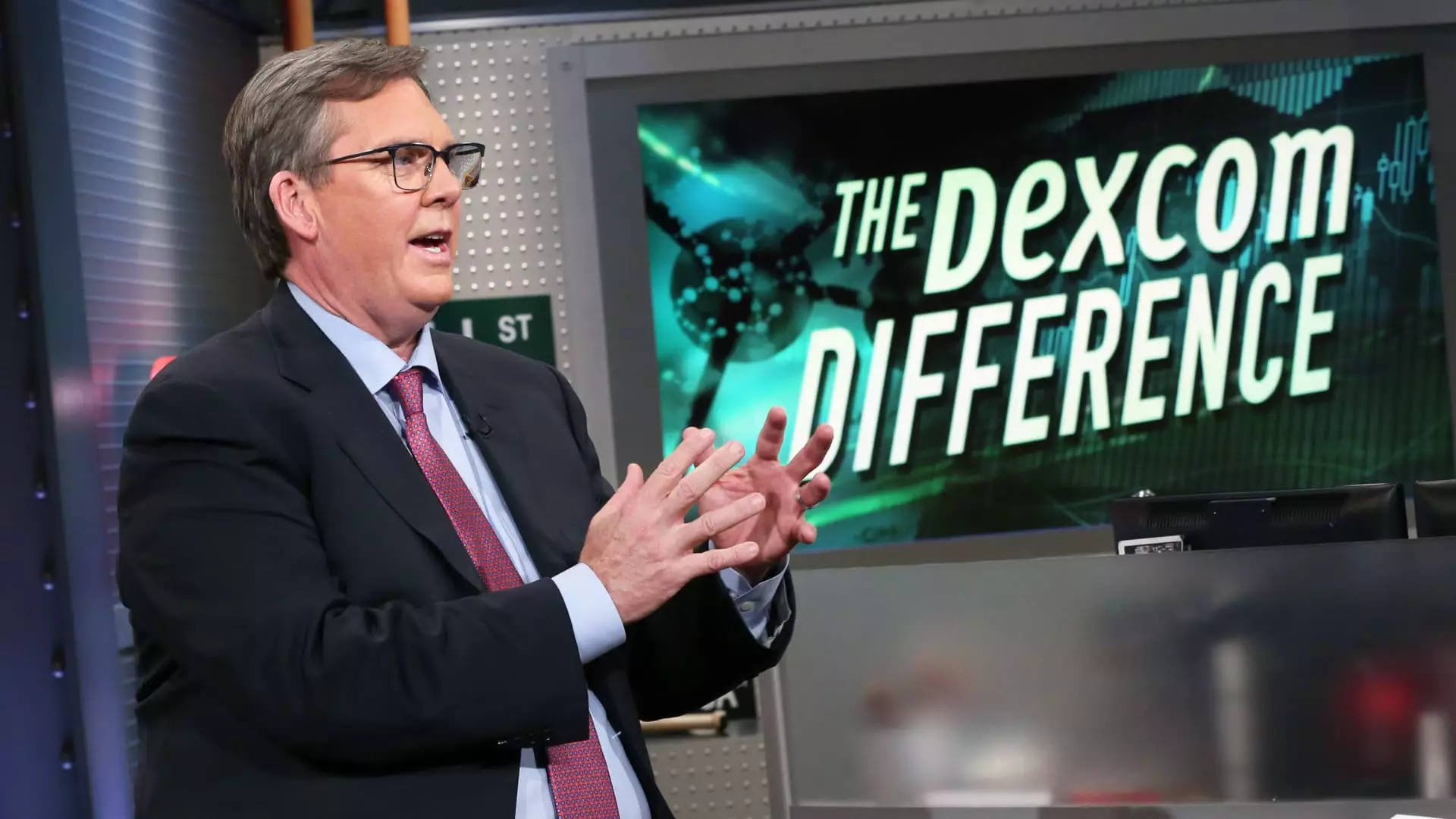Dexcom, a leading medical device company specializing in diabetes management technology, has recently reported its third-quarter performance. While the company exceeded analysts’ earnings expectations with an adjusted earnings per share of 45 cents—slightly above the 43 cents forecasted by LSEG—its overall financial trajectory appears to be under pressure. The reported revenue of $994 million, which edged out the anticipated $990 million, marks a nominal increase of 2% from the previous year’s $975 million. However, the decline in U.S. revenue by 2% compared to $713.6 million in the same quarter last year has raised eyebrows among investors.
Revenue Challenges and Market Response
Despite the positive earnings per share figure, the market responded negatively, seeing Dexcom’s shares plummet by 9% during after-hours trading. This reaction seems to stem from a broader concern about the company’s performance in the U.S. market, which holds a significant portion of its business. The decline in domestic revenue indicates potential issues with market penetration or competition, undermining investor confidence. Such fluctuations in stock performance reflect a deeper anxiety regarding Dexcom’s growth trajectory, especially after a stark revenue drop earlier in the year that led to a nearly 40% share price decline following disappointing second-quarter results.
Leadership and Strategic Responses
In addressing these financial complexities, CEO Kevin Sayer highlighted a series of factors contributing to sluggish growth. The restructuring of Dexcom’s sales team, an increase in competition, and a reduction in new customer acquisition all played a role in the company’s current predicament. Nonetheless, Sayer expressed optimism, suggesting that third-quarter metrics indicated signs of recovery. This resilience could revitalize investor sentiment if the company can sustain or boost its market presence in the upcoming quarters.
Additionally, the announcement of Teri Lawver’s pending retirement as chief commercial officer introduces an element of uncertainty regarding leadership during a pivotal period. Lawver’s departure could impact the overall strategic direction of the commercial division, further complicating the company’s efforts to stabilize revenue streams. Sayer’s decision to temporarily lead the commercial organization while a successor is sought will likely be critical in navigating the impending transition.
Despite these challenges, Dexcom has upheld its fiscal guidance, projecting anticipated revenue between $4 billion and $4.05 billion for the full fiscal year. This continued commitment to its revenue targets may signal confidence in the efficacy of its recent initiatives, including the launch of its first over-the-counter product, Stelo. Aimed at non-insulin users, this product could expand Dexcom’s customer base, potentially offsetting the impact of declining sales to its core demographic.
While Dexcom’s third-quarter results reflect a mix of promise and ambiguity, the company is faced with critical challenges that could determine its future success. The balance of leadership transitions, persistent market dynamics, and the ability to innovate will be paramount as Dexcom strives to reclaim its competitive position in the burgeoning field of diabetes technology.

